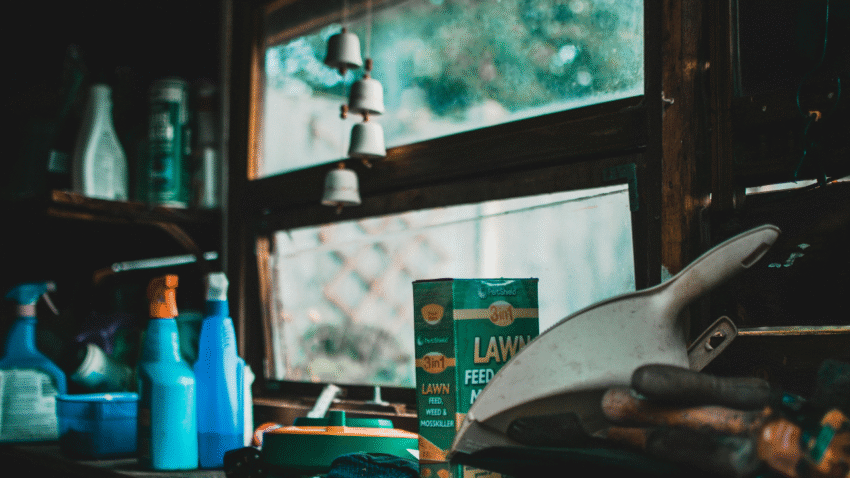Introduction
If your tools are scattered across your workbench, stuffed into drawers, or lost in boxes, it’s time for a better system. A wall-mounted tool organizer is a simple yet powerful way to keep your garage tidy and your tools easy to find. In this guide, you’ll learn how to set up a wall-mounted tool organizer so you can maximize space, improve efficiency, and give every tool a dedicated home.
Why a Wall-Mounted Tool Organizer Matters for Your Garage
In a busy garage, space is often at a premium. Tools left lying around not only cause clutter but can also lead to lost time and damaged equipment. Installing a wall-mounted tool organizer offers several benefits:
- Maximizes vertical space so your floor stays clear for vehicles, bins, and large equipment.
- Improves accessibility by keeping tools within arm’s reach of your workbench or project area.
- Prevents damage by keeping sharp tools from knocking into each other.
- Saves time since you’ll always know where each tool belongs.
- Enhances safety by keeping hazardous tools out of pathways.
A properly installed organizer can completely transform your garage’s functionality and keep you working efficiently.
Step-by-Step Guide to Setting Up a Wall-Mounted Tool Organizer
1. Choose the Right Location
Select a wall area near your workbench or primary project zone. Make sure the spot is well-lit and easy to reach. Avoid placing it in high-traffic areas where people might bump into protruding tools.
2. Decide on the Type of Organizer
There are several types of wall-mounted tool organizers to choose from:
- Pegboards: Versatile, customizable, and ideal for various tool shapes and sizes.
- Slatwall panels: Strong and professional-looking, with multiple hook and shelf attachments.
- Magnetic strips: Perfect for metal tools like screwdrivers, pliers, and wrenches.
- Custom racks: Built to fit your exact collection and tool sizes.
Choose the type that best suits your garage’s style, budget, and tool collection.
3. Gather Materials and Tools
Materials:
- Wall-mounted tool organizer (pegboard, slatwall, or rack)
- Mounting hardware (screws, anchors, or brackets)
- Hooks, bins, and holders for organizing tools
- Optional: labels or marker tags
Tools:
- Tape measure
- Level
- Drill and drill bits
- Stud finder
- Screwdriver
- Pencil
4. Measure and Mark the Wall
Measure the size of your organizer and mark its outline on the wall using a pencil. Use a level to ensure straight lines. This step ensures that your organizer will be mounted evenly and look professional.
5. Locate and Mark the Studs
Use a stud finder to locate wall studs behind your chosen area. Mark these locations with a pencil. Studs provide the strength needed to support the weight of tools without pulling out of the wall.
6. Pre-Drill Holes for Mounting
If your organizer will mount directly into studs, pre-drill holes at the marked stud points. If it won’t align perfectly with studs, use heavy-duty wall anchors or toggle bolts for secure installation.
7. Install the Organizer
Lift your organizer into position and secure it with screws through the pre-drilled holes. If you’re installing a pegboard or slatwall, use spacers behind the board so hooks can fit properly without hitting the wall.
8. Add Hooks, Holders, and Accessories
Arrange hooks, bins, and holders to match your tool collection. Group tools by type—such as wrenches together, screwdrivers in a row, and pliers in one section. Adjust placement until it feels natural for your workflow.
9. Hang and Arrange Your Tools
Hang your tools on the organizer, keeping frequently used items at eye level. Heavier tools should be placed lower for safety. Avoid overcrowding any section, as this can make tools harder to remove.
10. Label for Easy Identification (Optional)
Label each hook or bin to make returning tools to the correct spot easier. This is especially useful if multiple people use the garage.
Common Mistakes to Avoid
- Skipping the Stud Finder
- Problem: Anchoring only to drywall can cause the organizer to pull loose.
- Solution: Always secure to studs or use strong wall anchors.
- Placing Tools Too High
- Problem: Hard-to-reach tools can cause strain or accidents.
- Solution: Keep regularly used tools between waist and shoulder height.
- Overloading Hooks
- Problem: Too many heavy tools on one hook can bend or break it.
- Solution: Distribute weight evenly across multiple hooks.
- Poor Lighting
- Problem: Dim areas make it harder to find tools.
- Solution: Install a bright LED light above your organizer.
- Neglecting Tool Maintenance
- Problem: Storing dirty or rusty tools reduces lifespan.
- Solution: Clean and dry tools before hanging them.
Extra Garage Tips & Hacks
- Use Clear Bins: Store small parts like screws, bolts, and washers in labeled clear bins on your wall system.
- Add a Charging Station: Mount a small shelf with outlets beneath your organizer for charging drills and other battery-powered tools.
- Mix and Match Systems: Combine pegboard with magnetic strips or custom racks for maximum flexibility.
- Related Tip: See our guide on how to organize tools in your garage for more space-saving solutions.
Conclusion
Learning how to set up a wall-mounted tool organizer is a small project with a big payoff. By choosing the right location, securing it properly, and arranging tools efficiently, you can keep your garage neat, functional, and ready for any project.
Bookmark this guide to keep your garage functional, organized, and clutter-free year-round.
